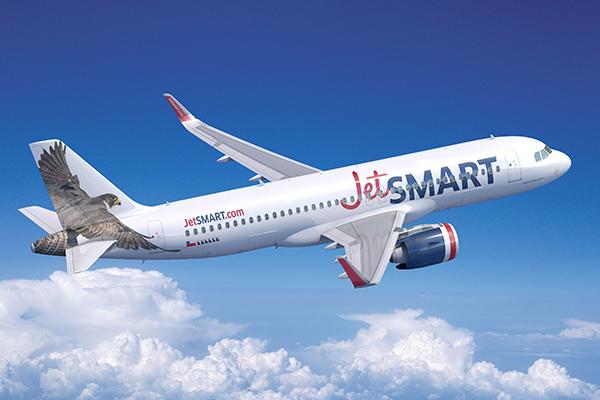
Chilean carrier JetSMART is flying more routes currently than before the COVID-19 pandemic started—a sign that the LCC’s business model is working in South America, CEO Estuardo Ortiz said.
Speaking to the Routes Reconnected conference, Ortiz confirmed JetSMART is now flying 62 routes, though frequencies have been reduced to many destinations. He added that the airline sees plenty of room for growth, particularly as South America emerges from the pandemic, because JetSMART is tapping into a population that is just starting to view air travel as a viable option.
“About 20% of our passengers weren’t flying on any carrier before we entered the market” in 2017, Ortiz said, adding that these passengers either traveled by bus or simply didn’t travel much at all.
“There is a large middle class in Chile that couldn’t afford airline pricing as it was," he said. "But we’re offering flights at 35% lower fares.”
In South America, there are “160 million people in the middle class and they travel very little because they are very price sensitive,” Ortiz said.
Ortiz explained that JetSMART is not concerned with market share: “We focus on stimulation [of demand]. We don’t focus on share … We’re flying more routes than before the pandemic, many of which are not based in [Chile’s capital city] Santiago. There is a lot of space for us to grow.”
The carrier operates an all-Airbus A320 family fleet, including seven A320neos. All of its aircraft seat 186 passengers.
Ortiz said that post-pandemic the only factor that will stop JetSMART from adding routes are high airport fees throughout South America. Airport fees are “obstacle number one” for airlines in the region, he added.
Nevertheless, JetSMART’s low-cost model will enable it to quickly ramp up flying once the pandemic passes, Ortiz said. “We will focus on what we do best: costs,” he added. “We will come out of the pandemic with even lower costs.”
Ortiz said the first quarter of 2021 “was an up and down quarter,” adding: “We operated 74% of our [pre-pandemic] capacity in January, but that dropped in February and March. The second quarter is going to be a quarter with a lot of challenges, but I do think there is light at the end of the tunnel. I would expect to see a much better third quarter and a fourth quarter that nears 2019 capacity.”
He cautioned that South American airlines being able to ramp up capacity later in 2021 is contingent on governments in the region easing COVID-19 restrictions. “The quarantines are very detrimental to restoring economies,” he said. “There needs to be clear expectations [for passengers] and reducing uncertainty is key. People need to know that, if I book a trip for November, I will be able to travel in November.”
Photo credit: Airbus
